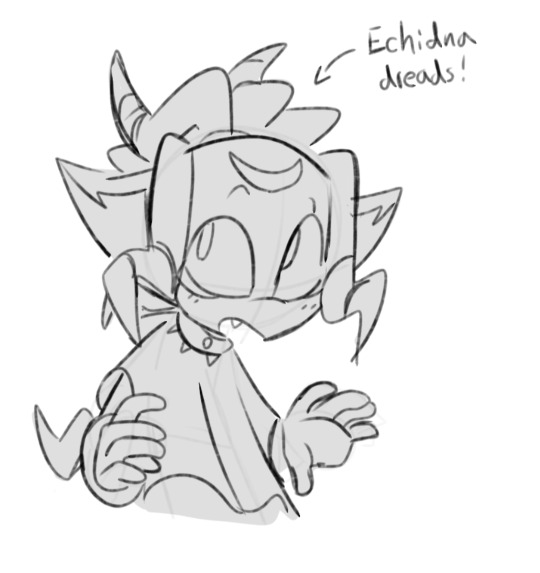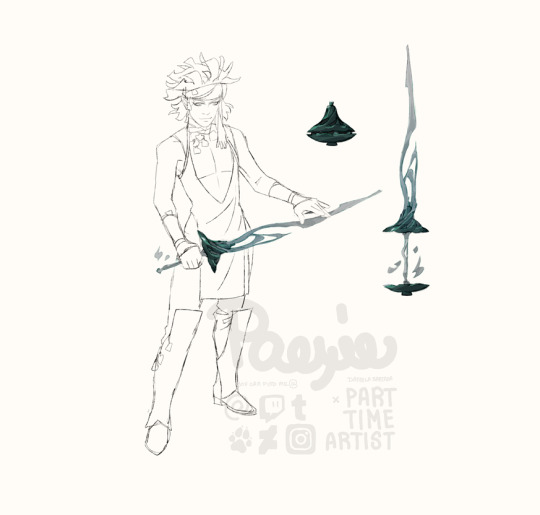#Their name is
Explore tagged Tumblr posts
Text


Guys would you all still love me if i yumeship with Pondchild Tord?
114 notes
·
View notes
Text


Shadikal fankid idea I'm currently working on, they are a fucked up little creature dude but I love them
(forgot to mention this was day 36 of drawing Shadow everyday)
#sonicart#sonic art#sonicfanart#sonic fanart#sonic artist#sonic fankid#shadow fankid#shadow#shadow fanart#shadow the hedgehog#shadikal#shadikal fanart#shadow x tikal#shadikal fankid#fankid#there's a lot of hashtags here you get the idea#their name is#Rain#are they a darkling- hedgehog- or Echidna? no idea#but they are loved (by me)
257 notes
·
View notes
Text
Just saw the new episode of Helluva Boss, and I must say, Bee was right, Satan is hot. Not that I doubted.
#also#i love his little anger management coach#it was actually one of my favourite headcanons about him#that he never goes out without one of those guys#like tom lucitor in the first seasons of star vs the forces of evil#so i'm delighted it's actually true#helluva boss#helluva boss mastermind#mastermind helluva boss#hb mastermind#mastermind hb#satan#helluva boss satan#satan helluva boss#hb satan#satan hb#their name is#yogirt#according to the credits#also also#striker was slaying in that new outfit#hope bombproof's visit to the vet went well...
107 notes
·
View notes
Text

so ur a space? and a fox? interesting….
#ART#original character#anthro#space#fox#their name is#Sirius#i had a sirius before but i never used him so they get the name now
57 notes
·
View notes
Text

Day 7: Oracle
223 notes
·
View notes
Text
sorry guys... it's Carol and her fiancé Nathan and their bf Hal...


#at first the ship name of carol and nathan was cat bit then..#one of my oomfs and best server ever... brought in Hal#Their name is#halcat#do you guys get my vision.. hal is the type to be jealous of what carol and nathan has going on but really he wants them to scoot over...#nathan business the great#since no canon name this is his name...#hal jordan#carol ferris#grabbing them like dolls and pushing them together#theyre kinda like ron reagan and brett from inside job btw#im nathans number one fan guys#i hope he genuinely gets good character even though we barely know him...#speedster ramble#speedster art#PLEASE DEAR GOD DONT MIND THE PROPORTIONS....I RUSHED UT
34 notes
·
View notes
Text
Underrated dynamic I’m only going to do a compilation for once: the Host and Sun Wukong
I want to see them be friends
“Oh he almost killed her-” AND HE’D DO IT AGAIN LET HIM TEACH HER HOW TO POSE
#woof loupen#lego monkie kid#their name is#.#hold on i had it#what was their dynamic name#AT THE TIP OF MY TONGUE OUGH#something clouds…#snow clouds?#YEAH
52 notes
·
View notes
Text

hunter based on a dream i had
16 notes
·
View notes
Text
Hello everyone!! I'm back with another post about my original universe, this time about nymphs!
This is even longer than the vampire one so the rambling is under the cut, and I was so tempted to include information about my inspiration for certain things and why I made the creative decisions I did, but I refrained because I wanted to keep this focused and not go off on tangents (however, if you do want to hear about that stuff, feel free to send me an ask at any time! I'm always happy to ramble about this universe!)
So. Nymphs. They're typically defined (by humans) as nature spirits, but what does that mean?
Well, the literal dictionary definition is "a spirit born from the earth or water; a being connected to the earth." Nymphs are, in short, personifications of nature. That's not to say that every little aspect of nature has a corresponding nymph- but there are several kinds of nymphs for several different types of nature.
Nymphs, as a whole, can be divided into two categories: land and water. There are a couple types of nymph that could fit into both categories, and one specific type of nymph that doesn't fit into either, but most nymphs can be clearly defined as one or the other.
Nymphs frequently spawn in areas with high magical concentration; why this is, nobody knows, and most other scholars have put it down to those areas being sacred in some way. These scholars are the same ones that hail nymphs as creations of the divine, made to safeguard the lands that are rightfully ours, so any conclusion of theirs must be taken with several grains of salt. I find that many scholars who subscribe to this field of thinking have never even seen a nymph in their lives, and assume that they are all perfectly like us humans (despite their appearances). This is a lie, one that continues to be retold despite overwhelming evidence to the contrary.
To understand nymphs, one must first understand that they are not human. They are sentient, intelligent, and quite interesting, but no matter how humanoid their shape might be, they are not and never will be even close to human beings. The exceptions to this rule will be covered later, but true nymphs are nature in its purest form: wild, unpredictable, and untameable. Like fairies, they operate on an entirely separate morality than humans, but unlike fairies, there are no clever tricks you can use to escape them, no set rules you may follow. If fairies are order, nymphs are chaos. If you should encounter a nymph, then by all means converse with them and befriend them if you like, but never forget that they are not the same as you, and no matter how benevolent they may seem, they could turn on you in an instant.
With all of this out of the way, let's finally get to the types of nymphs and their origins.
Land Nymphs
This category of nymph, as the name suggests, are tied to the land. There are several kinds of nymphs who fall under this category, and those nymphs have so many subspecies among them that if I listed them all, this text would be thicker than my torso.
Still, I shall endeavor to at least impress upon you the general idea of which nymphs come from where, so that you might know to use the correct terminology when describing to a friend and encounter you may have had in the woods or fields. Any further study into the subspecies can be found in other, more involved texts, ones whose authors were compensated enough to care about listing every type of nymph that could possibly be found in our lovely lands.
The first to be aware of are dryads, nymphs who have spawned from trees. It is unknown how long a tree must live before becoming a dryad, but this author suspects it to be somewhere in the hundreds, if only for the fact that cutting down younger trees has not as of yet brought a furious dryad out for my blood into my path. Should this change, this text will naturally be updated should I survive long enough to do so.
There are as many types of dryads as there are types of trees, and though there are certainly scientific names for each and every one, I personally have found that simply using the name of whichever tree they spawned from is quite sufficient. A dryad who spawned from an ash tree is an ash dryad, from an oak tree is an oak dryad and so on and so forth; I am quite sure I need not recount the name of every tree for the reader to understand my point.
True dryads, once born from whichever tree they are, are from then on about as attached to the tree as a human might be their parents; their personal feelings vary from nymph to nymph, but in terms of life force, they can and will live even if their tree has been cut down. Unlike humans, the only thing that can kill a true dryad is when the last trace of their tree has disappeared from this world; be it by decay or fire or a misplaced disintegration spell, once the tree is well and truly gone, so too is the dryad.
In terms of a dryad's appearance, their skin will be made out of the same bark as their tree, their hair the same leaves, their innards the same wood. Their eyes may have fruits or flowers in them depending on the tree and time of year, but they may simply be empty sockets. In any case, you should know a dryad at first sight, for unless walking trees are quite common in your place of residence, there's really nothing you can mistake them for.
I would give a description of a dryad's typical personality, as so many others have in their own texts, but my experiences with them have made me aware that they differ in personality as much as humans do; this holds true for all nymphs and I will not repeat such trite and blatantly untrue statements as "all dryads are nurturing, all naiads are mischievous," etc. That is my final statement on this matter and if I receive one more letter from my editor asking where the personality descriptions are, I swear I will-
(Editor's Note: The rest of this tirade had to be cut for its vulgarity and surprisingly creative threats towards me, my place of work, the scholars that continue to perpetuate these stereotypes, their families, and oddly enough, any cows they may have in their possession. Rest assured it was very much unsuited for such a text, but I preserved as much as I was morally able to.)
The florae, nymphs born from flowers, differ from dryads in appearance and origin, and that is where the differences end. They are comparatively rarer as flowers are quite fragile and much more likely to be destroyed, but so long as the vine or shrub or roots survive, so too will the flora. Oddly enough, trees that produce a dryad may also produce a flora from its flowers.
Florae are typically made out of whatever their flower bloomed on, be it vines or stems or branches. Whatever their flower was, replicas of it will be blooming all over their body, including in their eyes, and their hair will be made out of its petals. I have encountered florae many times, and I have yet to figure out just how some of the hairstyles they have are physically possible. One of the many mysteries of life, I suppose.
I suppose now that we have discussed dryads and florae, we must now discuss the dragon in the room: the dryads and florae that were once human beings.
There are many, many different theories of why and how this phenomenon occurs, but there are three facts we know: one, that if a human being is turned into a plant, they will inevitably become a nymph, two, that these humans are visually indistinguishable from true nymphs, and three, they are much more fragile- if their tree is cut down or their flower dies, they will die too and there is nothing that can be done about it.
It is for this reason that turning people into plants is so harshly punished, for you have condemned them to either an early death or a painfully prolonged life that could easily be cut short by anyone unaware of their plant"s true nature. But this is not a book about ethics or law, and if you wish to know more, than you must look elsewhere, for I have shared everything that is relevant.
With that out of the way, let's talk about (gods save me) the other land nymphs.
There are nymphs far older than human civilization, and indeed, humanity as a whole. These nymphs are known to the particularly religious as "The Elder Ones" and to the rest of us as simply the land nymphs.
The best way to explain these nymphs is to take a quick look at history. All throughout time, the earth has been shifting and changing, and as it changes, so too do the nymphs who personify it. These nymphs are fluid and ever changing, their types only vague classifications that serve to describe just what they represent at the moment. They are old, wise, and frustratingly reclusive, and the only reason we know they exist is because of what other nymphs have told us.
Thus far, the classifications are:
Oreads (mountain nymphs)
Valleaeae (valley/pasture/glen nymphs)
Pratae (meadow nymphs (Editor's Note: I personally don't understand the point of this distinction))
Napaeae (dell nymphs)
Haliae (seashore nymphs)
Umidae (wetland nymphs)
This is all we really know about them, and though other nymphs claim that it was them who created all other nymphs, that sounds far too religious for this book.
Water Nymphs
Water nymphs are far less varied than land nymphs (thank the gods, this chapter is getting long enough as it is) and they are all, in terms of origin and appearance, functionally the same.
Naiads (the term for water nymphs in general) spawn from a water source that isn't the open sea (why, this is still unknown.) They are made out of water and may adorn themselves with objects found in their water source, such as colorful rocks or flowers and things of that nature.
The subspecies of naiads are:
Lacuae (lake nymphs)
Pegaeae (spring nymphs
Fluminae (river nymphs)
Naiads are a curious case. Unlike land nymphs, they cannot be killed by any means. Instead, they will spawn, live as long as they like, and then once they're done they will dissolve into the water from whence they came, and another naiad will spawn and the cycle will start anew.
There will never be more than one naiad at a time from one water source, and we have yet to discover any nymphs born from the ocean.
Underworld Nymphs
Underworld nymphs have only been said to exist by the precious few undead who are willing to discuss such matters. They are not proven to be anything more than the dreams of a dying mind, and thus I will not be including them in this text no matter how much my editor begs me to.
If you wish to research them, there are a number of scholarly texts that hotly debate their existence, role in the Underworld, origin, and quite literally every little thing about them.
Vagari
Whatever Vagari may be, they almost certainly aren't nymphs. Some say that they are the children stolen away by fairies, others say that they are the tormented souls of lost travelers. All that can concretely be proven about them is that they can be seen wandering the woods, wearing clothes made out of animal skins and leaves, and wearing a mask in the shape of an animal's head.
I write about them in this text solely because we are just uncertain enough of their true nature that they could, possibly, be some form of nymph.
And with that, this text comes to a close. I hope this will serve you well wherever you may be, and always remember: if you should meet a nymph, treat them and their source with respect, never forget that they are as wild as the earth that formed them, and don't get too attached to any objects they may see in your possession. Or just run. That would work as well.
#every rose has its thorns#every rose lore#star's monster manual#i have decided to actually use proper grammar in my lore posts#because it's bugging me that the vampire post is so inconsistent in grammar#and i want people to be able to tell when i'm talking about this stuff just by looking at the post#shout out to my wonderful friend who let me ramble about nymphs and this world to her for i'm not even sure how long#you know who you are. ily <3 /p#my writing#fantasy writing#i was trying to make this sound like a textbook passage- i hope i succeeded!#this was so fun to write knowing everything about nymphs in this world because there's so much people don't know#remember that this is from the perspective of a human in this world who may know nymphs better than the average person#but they still have biases#see if you can find the quick mulan reference that honestly barely even counts as a reference#you'll get a digital cookie as a reward or something lol#i meant to post this yesterday#but my phone died in the middle of writing this and i was tired so i just went to bed#by the way the author of this is actually an entire character courtesy of me waking up at 3 am#their name is#aries del sol#and if i want to write more stuff about this universe in this style it'll probably be them writing it in universe
4 notes
·
View notes
Text
I've created a new baby (NPC) who's an absolute asshole and I adore them 🥰🥰
#Eli Speaks#EWF#their name is#Eschscholzia#which is the scientific name of a type of poppy flower#theyre a dreams druid and they chose their name cause of the association of poppies and sleep#and they will be a giant asshole if you mispronounce their name or try to shorten it#'call me my fucking name or im not fucking listen' 🥰🥰#im sure my players will love them but the PCs may not lmao#theyre a bratty angry teen and they have every right to be!
18 notes
·
View notes
Text
Went out for vaccines

Obtained otter in the process
13 notes
·
View notes
Text
Dream: Preferred pronouns? Edge: Don't talk about me
#incorrect quotes#dream sans#utmv#edge papyrus#OH SHIT A PAPS???#FUN FACT! I AM MAKING PAPS OC#Their name is#Merch#source: tumblr
17 notes
·
View notes
Text

#mentioning lilo and stitch by name was a mistake. this post was not Just about lilo and stitch.#now it’s not about anything but jeanvic. fuck off.
61K notes
·
View notes
Text

kobold that works at a tea shop, wao
142 notes
·
View notes
Text

Day 10: Healer
200 notes
·
View notes